Do I Have a Witness?
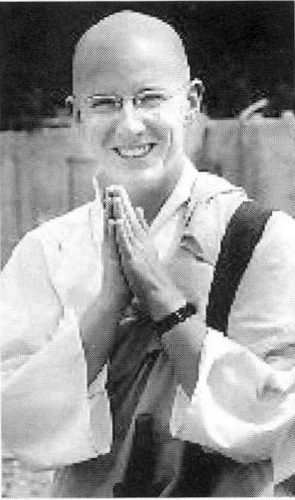
An Anglo-Catholic from Massachusetts,who is now a Buddhist nun in the Nipponza Myohoji order, a Japanese Buddhist peace movement, had a dream. Sister Clare Carter, as she is still called, along with Ingrid Askew, an African-American actress and stage director, wanted to commemorate the slave trade of the thirty to sixty million Africans who were kidnapped and taken across the Middle Passage to the Americas.
Their “Interfaith Pilgrimage of the Middle Passage” left Leverett, Mass. on May 31.Some forty to sixty people, including a dozen Buddhist monks, were scheduled to walk an average of fifteen to twenty miles daily. After walking the East Coast to New Orleans and from there traveling by boat to Brazil, then to Senegal, the American group will be joined in West Africa by another group who walked there from Europe. The combined marchers hope to end the pilgrimage in Cape Town by next May 31 when Archbishop Desomd Tutu, the pilgrimage’s honorary chairman, will greet them.
The American group, a multiethnic, multi-faith group, included Senji Hanaeda, a Japanese teacher, who joined because of the impact of reading a biography of the black abolitionist, Harriet Tubman. Aaron De Santiago, a twenty-six-year-old, left his bookstore clerk job in San Francisco to join because he recalled being led as a child to the grave of his African-born great-great-great grandfather in the South Carolina woods.
The marchers’ flags included that of the African diaspora and Buddhist flags bearing prayers in Japanese characters. Buddhist drummers also joined the 7,000-mile journey.
Refugee Chic
 Geshe Nicholas Vreeland, grandson of the late Vogue editor Diana Vreeland, has found a way to integrate his practice at a Tibetan monastery with his family background in fashion. Over the past two years, he has launched a business selling upscale home furnishings inspired by the simple housewares used by Tibetan monks. Silk bedspreads ($2,200) and cotton bags ($70) are among the items made by monks who weave, dye, and stitch by hand the fabric for products that retail at tony New York stores such as Felissimo and ABC Carpets.
Geshe Nicholas Vreeland, grandson of the late Vogue editor Diana Vreeland, has found a way to integrate his practice at a Tibetan monastery with his family background in fashion. Over the past two years, he has launched a business selling upscale home furnishings inspired by the simple housewares used by Tibetan monks. Silk bedspreads ($2,200) and cotton bags ($70) are among the items made by monks who weave, dye, and stitch by hand the fabric for products that retail at tony New York stores such as Felissimo and ABC Carpets.
They are made by monks from the Rato Monastery in Southern India where Vreeland is one of about seventy monks in residence. The budget of the monastery, already largely dependent on donations from the West, is under severe strain because of an increasing influx of refugees from Chinese-occupied Tibet. “We have no idea how many monks will come,” the monastery’s administrator is quoted as saying. “That is why we started this business.”
The line is supervised by fashion-industry friends of Vreeland’s, designer Jason Chenyan and his wife Reena, and will soon expand to include metal items such as incense burners. Speaking at the monastery with a New York Times reporter, Vreeland commented, “Sadly, the upmarket aspect of our products does not reflect the situation here.”
From Japan With Regrets
A group of two hundred Buddhist monks and lay followers from Osaka visited South Korea this September to express regret over suffering inflicted during Japan’s colonial occupation of the country. Japan ruled Korea from 1910 to 1945.
The Japanese group visited a number of temples in Korea as well as the Independence Hall, where they offered wreaths at a shrine dedicated to Korean victims of Japanese imperialism. The first of its kind, the tour was organized jointly by the Japanese Omi Railroad Company and the Korea National Tourism Organization. Similar tours are being organized for next year in Kyoto and Hiroshima.
No End in Sight
Tibetan monk Yeshe Samten died on May 12 of this year, a week after completing a two-year sentence for a political offense at Trisam Prison, west of Lhasa. He was 22.
According to the Tibet Information Network, Samten was arrested in May, 1996 when he joined fellow monks at Ganden Monastery in expelling a government work team that had been sent to remove photographs of the Dalai Lama. The next day, Chinese soldiers arrived and fired on the monks, killing one and wounding five. More than sixty monks, including Samten, were arrested immediately, followed by at least twenty-five more arrests within the week and around 100 monks subsequently expelled from Ganden. The monastery itself was then temporarily closed for “restructuring and reorganization.”
Torture administered at Trisam had left Samten with two broken ribs and unable to walk without crutches at the time of his release. He died of related injuries.
The TIN report was dismissed by the Chinese Government Religious Affairs Bureau as “sheer nonsense” and “slander.”
In a related story, torture is reported to have cost two Tibetan political prisoners their sanity. Ngawang Jungme, 29, and Lodroe Gyatso, 35, were both subjected to physical torture and sustained periods of solitary confinement at Drapchi Prison outside of Lhasa. Gyatso’s case had excited the interest of a German commission in 1995. China’s ambassador to Germany, Mei Zharong, had then stated of Gyatso that “For instigating unrest to overthrow the government and splitting the mother country he was sentenced to another six years in prison and three years’ withdrawal of his civil rights . . . . He is presently in a prison in Tibet and in good health.”
In January of this year, it was reported that Gyatso had been forbidden family visits and was unable to sit down because of severe back pain. Damaged kidneys had left him incontinent and he was said to be suffering from partial memory loss.
Sprungtime for Hanoi
Two prominent Buddhist monks were released from prison as part of a sweeping amnesty coinciding with Vietnam’s National Day celebrations.
Thich Quang Do, 70, and Thi Tue Sy, 55, were released from custody near Hanoi and permitted to return to Ho Chi Minh City, formerly Saigon, on September 1. They are both senior members of the Unified Buddhist Church of Vietnam, which has been outlawed since the early eighties.
Do, Secretary General of the UBCV, was detained in 1982 for protesting against the establishment of a state Buddhist church and was held without charge for ten years. Former philosophy professor Sy was arrested in 1984 and condemned to death for “attempting to overthrow the people’s power.” His sentence was subsequently commuted to twenty years’ hard labor.
The France-based Vietnam Committee on Human Rights claims that, despite the amnesty, most of the leadership of the UBCV still remains in prison or under house arrest. Vietnam’s Communist government denies it holds prisoners of conscience.
Mark Your Calendar

According to the Buddhist reckoning used in Thailand, the present year is 2541, but that hasn’t stopped many Thais from tapping into apocalyptic fears about the turn of the millennium. And though fueled by popular American movies such as Armageddon and Deep Impact, the trend may tap into anxieties more deeply rooted in local culture.
“Throughout Thai history there have been many local equivalents of Nostradamus, mostly monks,” Charoen Wattanasin, author of a local bestseller about the 17-century seer, told Agence France Presse. Other books with apocalyptic themes have also proven popular.
Environmental concerns have also weighed heavily with the Thai public. Several television personalities have bought land in the mountainous north of the country as a hedge against rising sea levels. In response to reports this August of nervous coastal residents fleeing their homes, meteorological officials called a press conference to assure Thais that they were in no imminent danger from tsunamis or melting polar ice.
In Thai literature, apocalyptic imagery is identified with the eighteen century, when the demise of the Ayutthaya Kingdom was seen by some poets as a portent of the end of the world. A more current Thai belief, derived from Buddhism, is that the world will be swallowed in a conflagration 5,000 years after the Buddha’s death, to be born anew from the flames. The corresponding date in the Common Era is 4457.
Statuary Offense
Worldly power is impermanent and is a delusion, said the sculptor of several political caricatures on display in the courtyard of Wat In Temple in Bangkok. So are your statues, the politicians seem to have responded. The offending figures were removed.
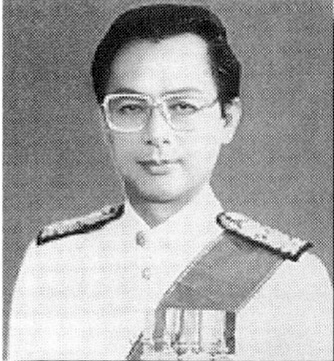
For a long time, nobody took much offense at the statues, created eight years ago by artist Samruay Am-oj, and fixtures in the courtyard since 1994. Limestone sculptures are a common feature of Thai temples, typically depicting mythical or historical figures. Samruay’s pieces updated this tradition by depicting Prime Minister Chuan Leekpai in an ancient warrior’s outfit and Interior Minister Sanan Kachornprasart riding on the shoulders of former Prime Minister Chavalit Yongchaiyudh.
Chavalit heard about them, and early in September, Chalerm Yubamrung, the deputy leader of Chavalit’s party, accused the ruling party, led by Chuan and Sanan, of using the statues in black magic rites “to destroy its opponents.”
The abbot of Wat In initially rallied to the sculptures’ defense, but capitulated after the temple was flooded by anonymous telephone calls demanding their removal. “We as Buddhist monks do not wish to be in the center of political arguments,” Phra Sophon Dharmmawongse told the Associated Press. “Some people are narrow-minded and we can do nothing with that but forgive them.”
Double Double, More Thai Trouble
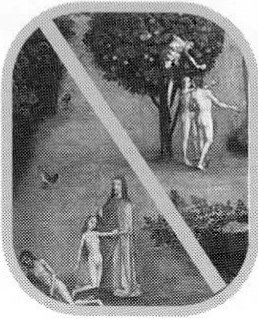
A monk in Thailand is in hot water on two counts. He masterminded a statue of the Buddha that sparked national controversy and opened a holy water shop that turned up the heat.
The temple, Wat Sanam Chand, in Chachoengsao (near Bangkok) is headed by a sixty-one-year-old abbot, Phra Khru Sopitsutakhun. The disputed statue is a thirty-three-foot-high Buddha standing with his right foot atop a large globe of the world.
The abbot said inspiration for the statue came from a dream and represents the Buddha protecting the globe while spreading his teachings. Government officials, academics, and some monks find the statue offensive to Buddhism. The director of Thailand’s Buddhism Research Institute said the pose is not one of the accepted sixty poses of the Buddha. The Education Minister was quoted in theAssociated Press as saying, “Posing with one foot on the globe is like sneering at the world.”
Within weeks, the abbot was in more hot water. His temple was ordered to close its holy water shop by the Supreme Sangha Council. It was selling about 200 brands of “holy water” made from the formulas of well-known monks throughout Thailand. More heat came from the temple’s murals of naked figures (Adam and Eve) that the council has said are sexually provocative.
Locals, however, are pleased with the extra tourists.
Not in My Back Yard
The plan of a Burmese Buddhist community to build a monastery and worship center has been blocked by a resident’s group in Chino, California.
The Myanmar Buddhist Society of America had been considering a location in the San Bernardino County township for over a year. When apprised of their plan early this January, opposed Chino City officials issued a letter stating they would not provide the project with a sewer connection and urged the County Planning Commission to reject it. Their argument: the proposed worship center would increase traffic to volumes unmanageable in a small rural community.
In a public hearing conducted in April, the Planning Commission concluded that Chino’s concern about traffic was exaggerated and recommended approval. At the next step in the process, however, a coalition of Chino residents successfully lobbied the County Board of Supervisors to deny the Buddhist Society a building permit. The board voted unanimously to do so this July.
The leader of the citizen group claimed no personal animus against Buddhism, but expressed concern that the monastery’s presence might result in the dilution of both community values and property values. For its part, the Buddhist Society, which had already filed a state lawsuit against Chino City alleging violation of First Amendment rights, added San Bernardino County to the list. Their attorney imputed a racist motive to Chino: “It’s obvious some of the opposition is driven by people who don’t want more Asians in their neighborhood.”
According to the 1998 Religious Liberty Protection Act, land-use legislation that “substantially burdens religious exercise” is illegal unless it is judged to meet the “compelling interest/least restrictive means” test.
Compassion Campaign
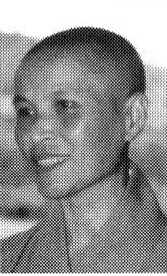
Recent activities by the Buddhist charity, the Tzu Chi Foundation, showed a powerful combination of interests working together: an engaged Buddhist vision, overseas financial support, and organizational support from the government of Taiwan (Republic of China).
The Tzu Chi Foundation was founded thirty-two years ago by the Taiwanese nun Master Cheng Yen. Claiming three million followers in Taiwan and abroad, it has administered aid and development programs in distressed communities around the world.
In September, Tzu Chi raised $187,000 from members in Australia towards the purchase of tools and medical equipment for the victims of a tsuna
mi in Papua, New Guinea. Another $150,000 was raised for flood relief in Peru, distributed there through official Taiwan government channels. Taiwan’s foreign ministry described the foundation’s work as a model for “coordinating the people’s resources to push pragmatic diplomacy.”
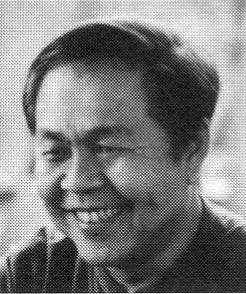
“Pragmatic diplomacy” may be the only sort available to Taiwan, which does not maintain formal diplomatic relations with most countries because it is not recognized as a sovereign nation (the People’s Republic of China claims Taiwan as part of China). On September 22, Master Cheng Yen was honored with a human rights award from the Unrepresented Nations and Peoples Organization, a Netherlands-based advocacy group for minorities and regions not represented at the United Nations. The other awardee was another prominent voice of engaged Buddhism, Thai activist Sulak Sivaraksa.
The Wheel
The newly launched all-Buddhist Network Television (BNT) in South Korea offers a lively mix of sermons by monks (well-known and obscure), tips on monastery-style vegetarian cooking, morning and evening chants, and walking tours through the country’s better known temples. If you’re in Seoul, BNT is Channel 32. Urine testing for men applying to become monks is a recent proposal from Thailand’s Ministry of Education.Tests are meant to screen applicants for drugs as well as the AIDS virus. Egg-centric Sarah Metler, 14, was refused admission to two high schools in East Brunswick, New Jersey, because she refused the required inoculations, claiming that her Buddhist beliefs oppose the use of vaccines grown in chicken eggs. Holy Bats! Bat guano is turning a profit instead of destroying ancient statues in Cambodia’s National Museum in Phnom Penh. More than twenty pounds of guano are swept up each day, which saves the statues – and nets the museum about $300 a month. A one-ton stone buddha, missing from its Beijing home temple since March, was found by police this October broken into five pieces and buried under a farm. Seven people were implicated in the 1,500-year-old relic’s heist. Burning rubber: old tires, plentiful and otherwise useless, have become an increasingly popular alternative to wood as fuel for cremations in Thailand. Monks have protested, citing environmental and public health concerns. In Portland, Oregon, monks of the Lao Buddharam Temple held a ceremony in a subway tunnel in September to placate spirits that might have been disturbed on account of a new rail line that runs beneath a city cemetery.
Thank you for subscribing to Tricycle! As a nonprofit, we depend on readers like you to keep Buddhist teachings and practices widely available.